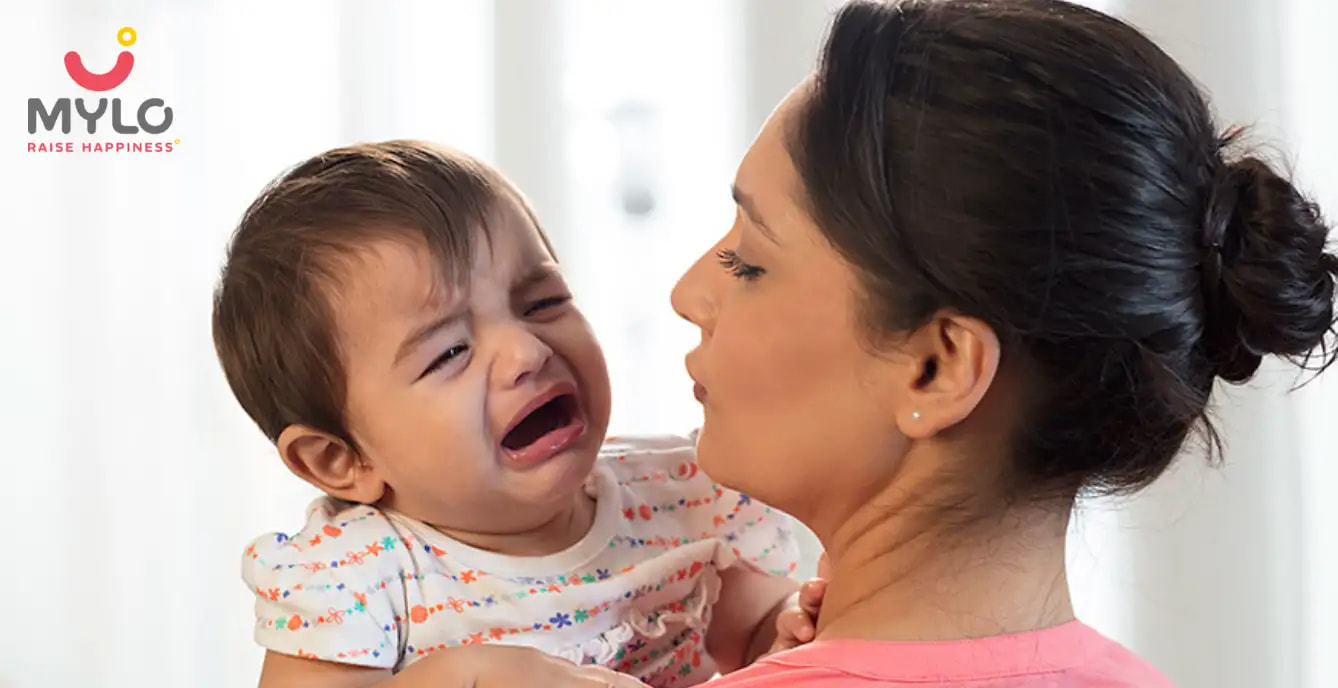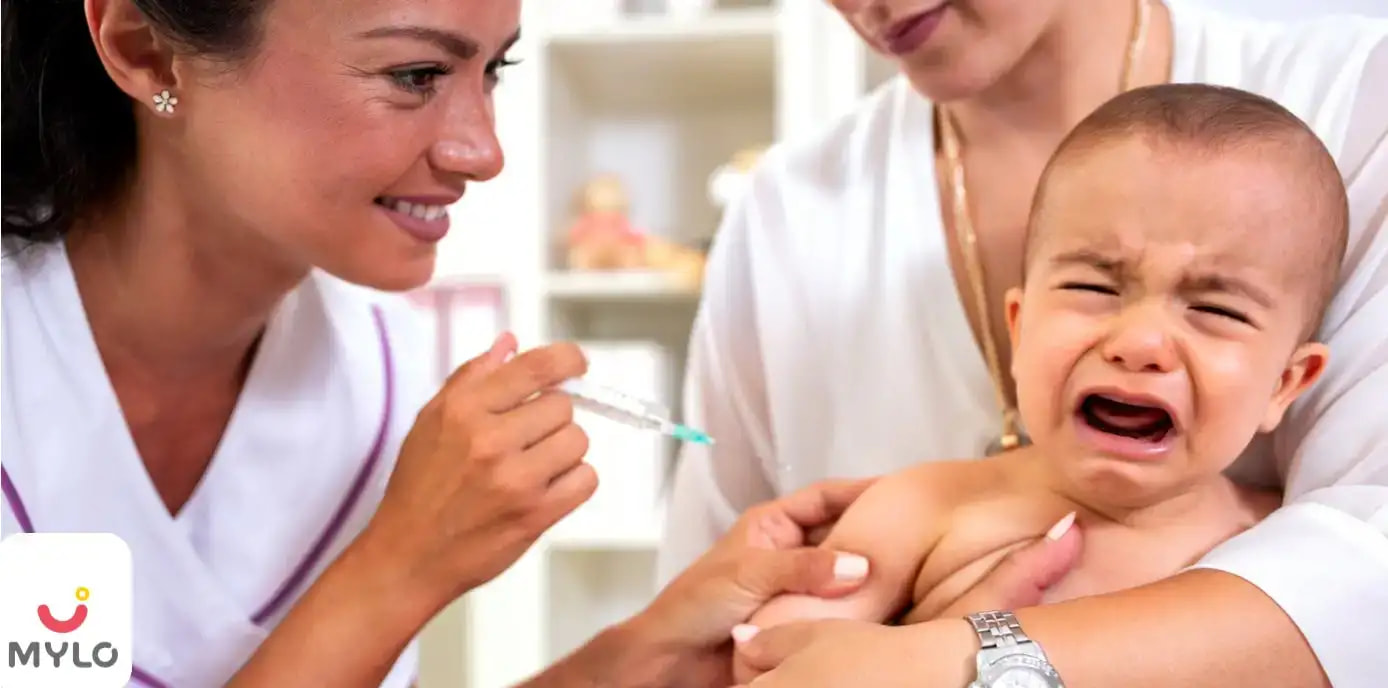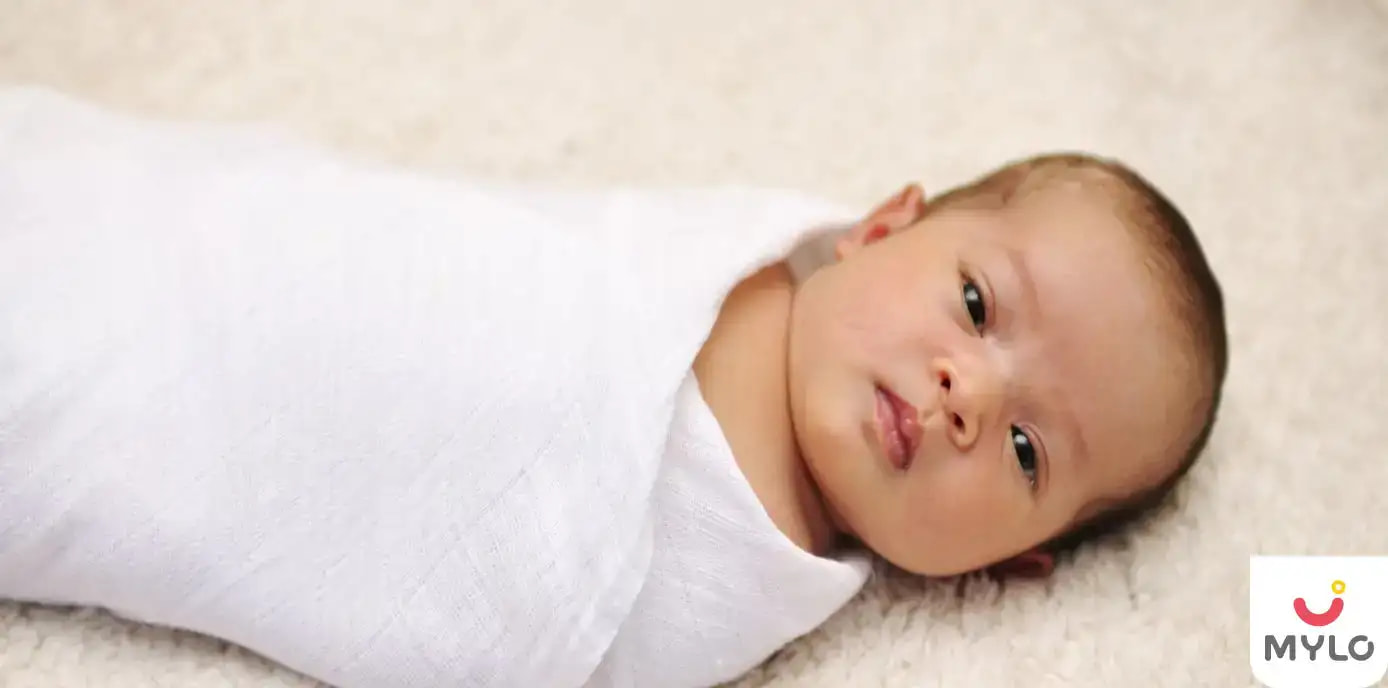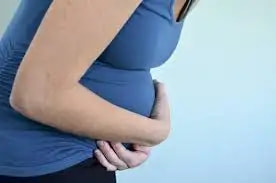Home

Home Remedies

10 Amazing Home Remedies for Cough and Cold in Toddlers
In this Article

Home Remedies
10 Amazing Home Remedies for Cough and Cold in Toddlers
Updated on 3 November 2023
When your child next has a cough or cold, you could try these gentle, effective and safe home remedies. Although none of them will get rid of your child’s illness, they will help soothe her symptoms so that she feels much better.
10 Amazing Home Remedies for Coughs and Colds in Toddlers
Here are ten effective home remedies you can try to soothe your toddler's cough and cold:
1. Lots of rest (all ages)
It takes energy to fight an infection, and that can wear a child out. Resting helps your child get back her energy and to heal.
Stress can sometimes play a role in illness too. If your child is under pressure, perhaps because of school or friends, or something happening at home, giving her a break may be just what she needs to fight off her symptoms.
If your child doesn’t want to rest in bed all day, a change of scenery can be helpful. If the weather is good, you could set up a comfortable place in the balcony, verandah or your garden for your child to rest. However, don’t leave her unattended.
Indoors, make something more fun than her bed, like a tent in a snug area near you. Or perhaps, she may enjoy some time in an indoor swing or a rocking chair.
If your child finds it hard to rest, help her by cuddling up with some books. Teach her some nursery rhymes or read her a story.
2. Steamy air (all ages)
Breathing moist or humid air helps loosen the mucus in the nose. A warm bath will also relax your child.
To moisten the air, you can get a humidifier, steamer or a cool-mist vapourise. Although humidifiers are becoming more popular, they are still hard to find in some areas. You may have to buy it online or in a specialised store.
If you use a humidifier, be sure to clean it often (every three days) and according to the manufacturer’s directions. Humidifiers can build up mould, which they then spray into the air if they’re not kept very clean. Steamers to fit all budgets are easily available in the market and online. Even facial steamers will do the trick.
All you need to do is leave the humidifier, cool-mist vapouriser or steamer on in the room where your child is sleeping, resting, or playing. As the air gets humid, your child will breathe easier.
If you do not have any of these items at home, a quick-fix solution is letting your child breath in steamy air in the bathroom. Let the hot water tap run and close the door to the bathroom. Block any gap under the door with an old towel, and sit in the steamy room with your child for about 15 minutes. You may as well bring a couple of toys or waterproof bath books to make it more fun for both of you.
You can also give your child a warm bath in a steamy bathroom. If she’s old enough, let her play in the bathtub for some time with you watching her always. The steam will help to ease her congestion.
Adding no more than one or two drops of eucalyptus, or pine essential oil to the bath water (or vapouriser/steamer) occasionally may also help. These oils are available at most supermarkets or chemists.
Cautions:
If you keep your child in a steamy bathroom, her clothes might get damp, so it is best to change them immediately after to stop her from feeling cold.
If you use a steamer, facial steamer or humidifier, make sure your child does not come close to the steam. Steam burns just as badly if not worse than hot water. Always keep the moistening device well out of your child’s reach but also in a place that will allow the steam to circulate in the room.
3. A bulb syringe (best for babies) and nasal saline drops
A bulb syringe clears the nose of babies who are too young to blow their own nose. It is helpful if a stuffy nose gets in the way of your baby’s breastfeeding or bottle-feeding. Try using it about 15 minutes before feeding your child.
Using a bulb syringe works best for young babies, but if your older baby or child doesn’t mind it, there’s no reason not to do it.
You can get a bulb syringe and sterile saline nose drops at a chemist store. You can even make saline water at home. Dissolve about half a teaspoon of salt in one cup of boiled and cooled water. Make a fresh batch each day and store it in a clean covered glass jar, to prevent germs from entering.
To use the bulb syringe, tip your baby’s head back, and squeeze two to three drops of saline solution into each nostril to thin and loosen the mucus. Try to keep her head still afterwards for about 10 seconds.
Once the saline drops have loosened the mucus, use the bulb syringe to suck it out. Squeeze the bulb of the syringe, and then gently insert the tip into your baby’s nostril. Then slowly release the bulb to collect the mucus. Before using the syringe in the other nostril, remove the mucus from the bulb by squeezing it in a sink or tissue. Clean it in a bowl of cool, boiled water before using it on the other nostril.
If your baby gets upset by the syringe, use the saline drops and then gently wipe the lower part of her nostrils with a cotton swab or napkin. If the mucus is dried up on the outer rim of your baby’s nose, try putting a drop of baby oil or petroleum jelly on a cotton swab or soft muslin square, and gently wipe it clean. Take care not to put any oil, cream or any other nasal drops inside your baby's nose without first checking with her doctor.
Cautions:
If you’d like to try this method, speak to your child’s paediatrician first. She will show you how to use the bulb syringe correctly so that it doesn’t cause any injuries or trauma to your child’s nasal cavity.
Sucking out mucus from your baby’s nose more than a few times a day might irritate the lining of her nose, so it is best not to do it too often. Check with your doctor about how often and for how many days you need to use saline drops.
Nasal decongestant sprays shouldn’t be used unless specifically prescribed by your baby’s doctor.
4. Extra fluids (six months and up)
Studies show that warm liquids are soothing and relieve cold symptoms like aches, fatigue, congestion and fever. Drinking plenty of fluids also helps prevent dehydration, which can happen easily with a cold. It also flushes and thins your child’s nasal mucus.
Traditionally, mothers prefer to give warm liquids such as soups, Holy basil and ginger tea (tulsi aur adrak ki chai), besan ka sheera, dal soup and so on.
Many mothers also find that cool liquids are just as helpful and comforting for their child, especially in the summer. You may like to try home made fresh juices, nimbu pani, fruit smoothies, lassi and ice lollies made from juice.
Cautions:
Stick to breastmilk for babies younger than six months old. Breastfed babies don’t need extra water even in hot weather. Just offer frequent breastfeeds to quench your baby's thirst and to keep her hydrated.
Formula-fed babies and babies on solids can have extra water. Don’t give your baby fruit juices or carbonated drinks, particularly if your baby’s dehydrated because of diarrhoea and vomiting.
5. Honey (12 months and up)
Honey coats and soothes the throat and helps tame a cough. Evidence suggests that honey can be effective at easing coughs and may help children sleep better overnight. Your child must be at least a year old to try this remedy.
Some people mix honey with hot water and add a squeeze of lemon, which provides a little vitamin C along with the soothing honey. Another popular traditional remedy for colds (especially a sore throat) includes mixing honey with a bit of ginger juice and a dash of black pepper.
Because honey is a form of sugar, it can be damaging to your child’s teeth. It’s important that your child brushes her teeth after she takes it, especially if you give it to her at bedtime.
Depending on the weather in your part of the country, honey can get hard at room temperature. To soften it, boil some water in a pan and remove it from the stove. Set the honey jar in the pan with the hot water for five or ten minutes. The honey will melt to the desired consistency.
Cautions:
Don’t give honey to a child before her first birthday. It can cause a very rare and occasionally fatal illness in babies called infant botulism.
6. Elevating the head (12 months and up)
Raising your child’s head while she rests can help her breathe more comfortably. You can raise her mattress with the help of towels or pillows.
If your child sleeps in a cot, place the towels or slim pillow between the mattress and the cot. Don’t try to raise the legs of her bed or cot by placing bricks or boards as it could make the cot unstable.
If your child sleeps in a big bed, say your family bed, an extra pillow under her head might do the trick. But, if she twists and turns while she sleeps, it’s better to raise the head of the mattress instead. This also creates a more gradual, comfortable slope than extra pillows under her head.
Cautions:
Be careful to not overcrowd the cot or bed with pillows. Keep checking on your child. If your child is a restless sleeper, she might flip around so that her feet are higher than her head, defeating the purpose.
Remember pillows are not recommended for babies under the age of one. Any kind of pillow, soft object and loose bedding can obstruct the infant airway and pose a suffocation risk. These have also been linked to SIDS (Sudden Infant Death Syndrome) also known as cot death.
7. Vapour rubs (two years and up)
Vapour rubs may ease cough and cold symptoms and help some children sleep better at night. Research suggests that their ingredients actually have no effect on nasal congestion, but they make the cold sufferer feel as though she’s breathing better by producing a cooling sensation in the nose.
However, keep in mind that paediatricians do not recommend using vapour rub on babies and toddlers younger than two years as it can cause irritation and make babies uncomfortable.
If you’re still keen to use vapour rub for your older toddler, speak to your child’s doctor. She may be able to recommend vapour rub products made especially for young children. These products contain petrolatum, oils, and eucalyptus (but no camphor or menthol).
If you prefer to use products without petroleum or paraben, then you could consider using natural vapour balms. These are available at ayurvedic stores or online. These balms are typically made with aloe, herbs, oils and essential oils. Even so use any natural products only after checking with your doctor as some with strong smells can worsen wheezing.
Cautions:
You should always speak to your doctor before using vapour rub for your toddler. When you have the go-ahead, follow her instructions. Don’t apply vapour rub anywhere on your child's face, including her mouth, nose, inside the nostrils or around her eyes. Only apply it on the chest and back. Also, don’t put it on broken or sensitive skin as it may irritate the skin.
8. Nose blowing (two years and up)
Clearing the nose of mucus helps your child breathe and sleep more easily, and generally makes her feel more comfortable. Many children don’t master this skill until after age four, but some are able to by age two.
Tips for teaching nose blowing:
- Let your child copy you. For some children, that’s all it takes.
- Explain that blowing your nose is "backward smelling."
- Have your child hold one nostril shut and practice gently blowing air out one side. A mirror or a little piece of tissue under the nose will help her see her breath.
- Teach her to blow gently. Blowing too hard can hurt her ears.
- Give your child her own little packet of disposable tissues. Teach her to throw away used tissues in a covered dustbin and to wash her hands after blowing her nose.
- If your child’s nose is sore from all the sniffling and blowing, you can rub a little petroleum jelly or other child-safe ointment around the outside rim of her nostrils.
Cautions:
It's best to use disposable tissues that can be thrown away easily in a covered bin.
If you choose to use a handkerchief, teach your child how to fold it and use a clean area when she needs to blow her nose. You will need to replace and wash a dirty handkerchief frequently.
Also, teach your child to throw away a used handkerchief in a separate small bucket with a lid. It is still important for her to wash her hands every time she blows her nose to stop the transfer on infections.
9. A neti pot, also known as a jala neti pot (4 years and up)
A neti pot flushes a mild saline solution through the nostrils. It moisturises the area and thins, loosens, and rinses away mucus. This is a popular yoga nasal cleansing technique also known as 'jala neti'. Roughly translated, it means cleansing with water. Some researchers have found that saline nasal wash solutions help to relieve cold symptoms.
A neti pot looks like a very small watering can or teapot, and is typically ceramic or metal. Neti pots are available at several chemist shops, ayurvedic stores and online.
Fill the pot with warm saline water. Tilt your child's head sideways over the sink, and placing the spout of the pot in the top nostril. The water will flow gently through the top nostril and out the other nostril. Tell your child to breathe through her mouth through the procedure. This takes a little practice, but it's easy once you get the hang of it. Once it works one side, repeat on the other side.
If you'd like to learn from a professional, then many yoga instructors are qualified to teach Jala neti. Try practising on yourself before teaching your child to use a neti pot. Let your child watch you use it. If she agrees to try it, help her to use it.
You'll need your child to be cooperative. Using a neti pot isn't painful, but does feel strange at first. It's definitely not for babies or young toddlers, and older children (and adults) might not agree to use it.
Cautions:
Don't force a child who's not interested. This needs to be a very gentle procedure, or else your child may get upset and her nasal passage damaged.
10. Gargling with salt water (4 years and up)
Gargling with salt water is a time-honoured way to soothe a sore throat the world over. It also helps clear mucus from the throat and ease nasal congestion. While scientists haven't found out exactly why it works, studies have shown that the remedy is effective.
It is also a very simple remedy. Put half a teaspoon of salt in a glass of warm water and stir. If your child doesn't mind the taste, a squirt or two of fresh lemon juice can be a soothing addition.
Your child must be old enough to learn to gargle. That usually means school age or older. But some children can manage it sooner.
A few tips for teaching your child to gargle:
- Practise with plain water.
- Ask your child to tilt her head up and try to hold the water in the back of her throat without swallowing it.
- Once she's comfortable doing that, have her try to make sounds with her throat. Show her what that looks and sounds like.
- Teach her to spit out the water rather than swallow it.
Aim for gargling three or four times a day while your child is sick.
Cautions:
Always check the temperature of the water, especially if you have heated it in a microwave. The cup may appear cooler outside but the water can be hot enough to cause burns. Always use filtered, warm water for gargles.
References
1. Ashkin E, Mounsey A. PURLs(2013). a spoonful of honey helps a coughing child sleep. J Fam Pract
2.Goldman RD;(2011) Canadian Paediatric Society, Drug Therapy and Hazardous Substances Committee. Treating cough and cold: Guidance for caregivers of children and youth. Paediatr Child Health
Tags
10 Amazing Home Remedies for Cough and Cold in Toddlers in Bengali,10 Amazing Home Remedies for Cough and Cold in Toddlers in Hindi, 10 Amazing Home Remedies for Cough and Cold in Toddlers in Telugu, 10 Amazing Home Remedies for Cough and Cold in Toddlers in Tamil



Written by
Priyanka Verma
Priyanka is an experienced editor & content writer with great attention to detail. Mother to an 11-year-old, she's a ski
Read MoreGet baby's diet chart, and growth tips

Related Articles
Related Topics
RECENTLY PUBLISHED ARTICLES
our most recent articles

Diet & Nutrition
গর্ভাবস্থায় আলুবোখরা: উপকারিতা ও ঝুঁকি | Prunes During Pregnancy: Benefits & Risks in Bengali

Diet & Nutrition
গর্ভাবস্থায় হিং | ঝুঁকি, সুবিধা এবং অন্যান্য চিকিৎসা | Hing During Pregnancy | Risks, Benefits & Other Treatments in Bengali

Women Specific Issues
স্তনের উপর সাদা দাগ: লক্ষণ, কারণ এবং চিকিৎসা | White Spots on Nipple: Causes, Symptoms, and Treatments in Bengali

Diet & Nutrition
গর্ভাবস্থায় পোহা: উপকারিতা, ধরণ এবং রেসিপি | Poha During Pregnancy: Benefits, Types & Recipes in Bengali

Diet & Nutrition
গর্ভাবস্থায় মাছ: উপকারিতা এবং ঝুঁকি | Fish In Pregnancy: Benefits and Risks in Bengali

Diet & Nutrition
গর্ভাবস্থায় রেড ওয়াইন: পার্শ্ব প্রতিক্রিয়া এবং নির্দেশিকা | Red Wine During Pregnancy: Side Effects & Guidelines in Bengali
- ইনার থাই চ্যাফিং: কারণ, উপসর্গ এবং চিকিৎসা | Inner Thigh Chafing: Causes, Symptoms & Treatment in Bengali
- গর্ভাবস্থায় ব্রাউন রাইস: উপকারিতা ও সতর্কতা | Brown Rice During Pregnancy: Benefits & Precautions in Bengali
- Velamentous Cord Insertion - Precautions, Results & Safety
- Unlock the Secret to Flawless Skin: 7 Must-Have Qualities in a Face Serum
- Unlock the Secret to Radiant Skin: How Vitamin C Serum Can Transform Your Complexion
- Gender No Bar: 10 Reasons Why Everyone Needs a Body Lotion
- Unlock the Secret to Radiant Skin How to Choose the Perfect Body Lotion for Your Skin Type
- Top 10 Reasons to Apply a Body Lotion After Every Bath
- Communication in Toddlers: Milestones & Activities
- How to Improve Vocabulary for Toddlers?
- A Comprehensive Guide to Understanding Placenta Accreta
- Vulvovaginitis in Toddlers Causes, Symptoms and Treatment
- A Comprehensive Guide to Understanding Cerebral Palsy in Children
- Bitter Taste in Mouth During Pregnancy: Understanding the Causes and Remedies


AWARDS AND RECOGNITION

Mylo wins Forbes D2C Disruptor award

Mylo wins The Economic Times Promising Brands 2022
AS SEEN IN
















- Mylo Care: Effective and science-backed personal care and wellness solutions for a joyful you.
- Mylo Baby: Science-backed, gentle and effective personal care & hygiene range for your little one.
- Mylo Community: Trusted and empathetic community of 10mn+ parents and experts.
Product Categories
baby carrier | baby soap | baby wipes | stretch marks cream | baby cream | baby shampoo | baby massage oil | baby hair oil | stretch marks oil | baby body wash | baby powder | baby lotion | diaper rash cream | newborn diapers | teether | baby kajal | baby diapers | cloth diapers |








